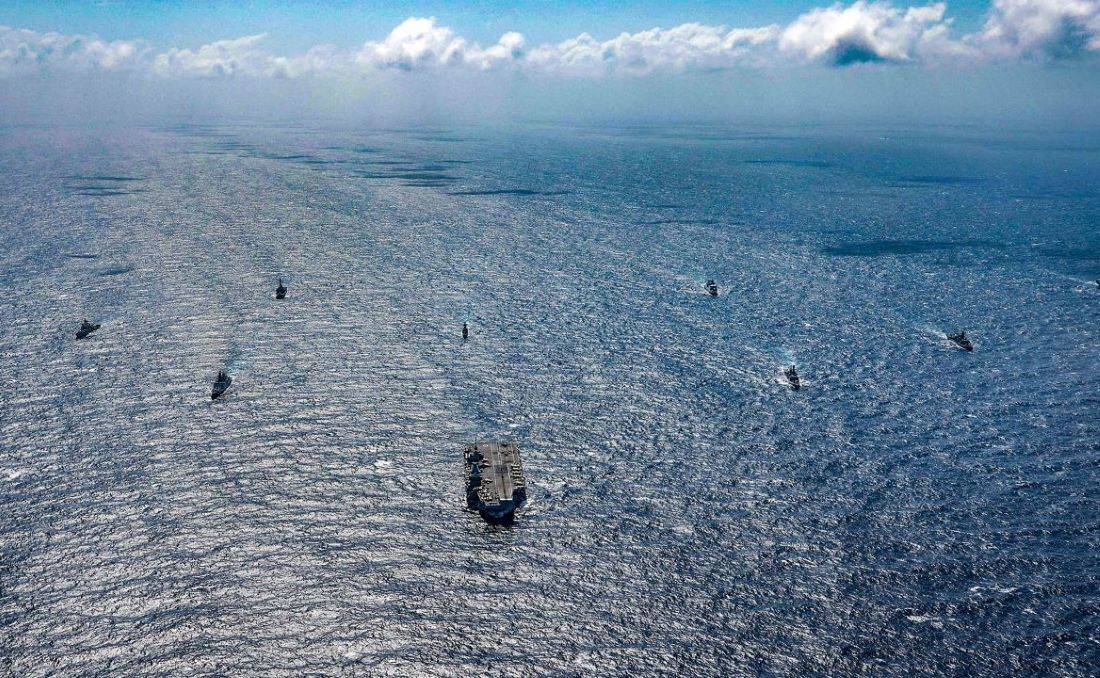
An international team of scientists led by Brown University researchers compares 10,000 years of past climate conditions reconstructed from different sets of geological records to simulations from an advanced climate model in a new study published in Science Advances.
According to the findings, about 18,000 to 15,000 years ago, as melted freshwater from the massive glacier that once covered much of North America poured into the North Atlantic, ocean currents that kept the Atlantic Ocean warm weakened, triggering a chain of events.
The system's weakening eventually led to the strengthening of an atmospheric loop in the Indian Ocean that keeps warmer water on one side and cooler water on the other. This extreme weather pattern, known as a dipole, causes higher-than-average rainfall on one side (either east or west) and widespread drought on the other. This pattern was evident in both the historical data and the model's simulation, according to the researchers. They claim that the findings will help scientists not only better understand the mechanisms underlying the east-west dipole in the Indian Ocean, but will also one day aid in the production of more accurate drought and flood forecasts in the region.
"We know that current gradients in Indian Ocean temperature are important to rainfall and drought patterns, particularly in East Africa," said James Russell, a study author and professor of Earth, environmental, and planetary sciences at Brown. "We now have a mechanistic basis for understanding why some of the longer-term changes in rainfall patterns in the two regions have changed over time," says the study's lead author.
The researchers explain the mechanisms behind how the Indian Ocean dipole they studied formed and the weather-related events it caused during the time period they studied, which spanned the end of the last Ice Age and the beginning of the current geological epoch, in their paper. The dipole is described by the researchers as an east-west dipole, with water on the western side cooler than water on the eastern side, which borders modern-day East African countries such as Kenya, Ethiopia, and Somalia.
They discovered that the dipole's warmer water conditions brought more rain to Indonesia, while the cooler water brought much drier weather to East Africa. This is consistent with recent Indian Ocean dipole events. Heavy rain, for example, caused floods and landslides on the Indonesian islands of Java and Sulawesi in October, killing four people and affecting over 30,000 people. On the other hand, Ethiopia, Kenya, and Somalia experienced severe droughts that threatened famine beginning in 2020.
The authors observed even more extreme changes 17,000 years ago, including the complete drying of Lake Victoria, one of the world's largest lakes. "Essentially, the dipole intensifies dry and wet conditions, which could result in extreme events like multi-year or decades-long dry events in East Africa and flooding events in South Indonesia," said Xiaojing Du, the study's lead author and a Voss postdoctoral researcher in Brown's Institute for Environment and Society and Department of Earth, Environmental, and Planetary Sciences.
"These are events that have an impact on people's lives as well as agriculture in those areas. Understanding the dipole can assist us in better predicting and preparing for future climate change." The dipole studied by the researchers was formed by interactions between the Atlantic Ocean's heat transport system and a tropical Indian Ocean atmospheric loop known as the Walker Circulation. At low altitudes near the ocean surface, the lower part of the atmospheric loop flows east to west across much of the region, while the upper part flows west to east at higher altitudes. The upper and lower air combine to form a large loop.
The massive melting of the Laurentide ice sheet, which once covered most of Canada and the northern United States, caused an interruption and weakening of the Atlantic Ocean heat transport, which functions like a conveyor belt made of ocean and wind currents. As the Atlantic cooled, wind anomalies caused the atmospheric loop over the tropical Indian Ocean to become more active and extreme. This resulted in more precipitation on the east side of the Indian Ocean (where Indonesia is located) and less precipitation on the west side, where East Africa is located. The researchers also show that this effect was exacerbated during the study period by lower sea levels and the exposure of nearby continental shelves.
More research is needed, according to the scientists, to determine exactly what effect the exposed continental shelf and lower sea level have on the Indian Ocean's east-west dipole, but they are already planning to expand their work to investigate the question. While this line of research on lower sea levels will not be used to model future conditions, the work they've done on how the melting of ancient glaciers affects the Indian Ocean dipole and the Atlantic Ocean heat transport system may provide important insights into future changes as climate change causes more melting.
"Greenland is currently melting at such a rapid rate that it is discharging a large amount of freshwater into the North Atlantic Ocean in ways that are affecting ocean circulation," Russell explained. "This work has provided a new understanding of how changes in Atlantic Ocean circulation can impact Indian Ocean climate and, as a result, rainfall in Africa and Indonesia."
















